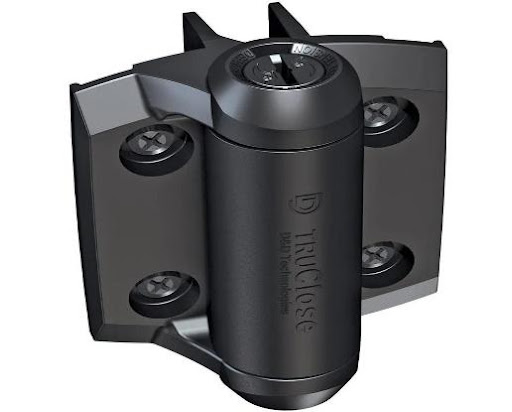Are self-closing gate hinge something you’ve heard of? They link two items while permitting at least one of the objects to spin, just like all hinges. On doors, gates, and even furniture, you can find them. However, soft close gate hinge stand out from all other varieties of hinges. Please continue reading to learn more about self-closing hinges and how they function.
Self-Closing Hinges: What Are They?
self-closing gate hinge perform as promised by doing so on their own. As was already noted, hinges enable the rotation of things. A door with a hinge can be turned by pulling it open. The door may or may not stay open depending on the sort of hinge it is attached to. If it’s attached with a conventional hinge, it won’t close until you do. On the other hand, if the door is attached to a soft close gate hinge, it will close on its own without your assistance.
Self-closing hinges can link several other items as well. They can join gates, panels, and other solid things even though doors are their most frequent use. Self-closing hinges close on their own, setting them apart from other kinds of hinges.

How Do Those Hinges Function?
The automated gate latching requires both a self-closing gate hinge strong enough to activate the latch and the proper latch. Most self-closing hinges work by gently pushing back the attached object until it is in its natural, closed position. A knuckle is created when two leaves are joined.
The knuckle, however, frequently has a spring attached to it. Most other hinges have a knuckle that merely retains a pin. On the other hand, self-closing hinges use a spring to draw and shut the object they are attached to actively.
Soft close gate hinge
Employ a spring to close independently without a person’s help. A spring inside the knuckle pulls the attached object with it. When the door is opened, the spring in a self-closing hinge will stretch. Stretching will inevitably cause tension. The self-closing hinge then pulls the door back to the closed position, instantly relieving the stress on the self-closing mechanism.
Hydraulic Hinge
Several Mechanical Engineering Thesis Titles recommends that A hydraulic hinge, powered by fluid pressure, facilitates a door’s closing mechanism. The hydraulic fluid must squeeze through small gaps to move from one container to another. The section of these gaps impacts hydraulic motion and, coupled with the pressure placed on the hydraulic fluid, and these factors determine how quickly the fluid switches.
When the door is opened, a plunger forces air out of a chamber, which causes the chamber to be vacuumed. A vacuum drives these hinges. Keep your grip on the door because if you let go, the hoover will draw the plunger back into the space and shut it off completely.
Hinges With Springs
A particular type of soft close gate hinge uses the spring’s restoring force, which is produced when the door is opened. The spring does wind up as a result of this force, closing the door.
The spring opens the door when pulled open, and when the handle is pulled back, the spring winds back up to close the door. The spring-loaded hinges do their job well, but take care since they might wear out and damage your door frame or the door itself if the pace at which they close is uncontrolled or excessive.
Conclusion
Soft close gate hinge can require manual operation to close the hinge. Often, knuckles have a spring. Several closer hinge manufacturers offered the configurable function in the uncontrolled self-closing hinge as a direct response to the issue of noisy shutting brought on by an uncontrolled self-closing gate hinge.
The tension adjustment makes it simple to change the gate’s closing force. This ensures that the gate’s tension can be changed to suit the situation. The self-closing hinge will stretch its internal spring as the associated gate rotates, returning the gate to its closed position.
Reading this post will be beneficial in helping you choose the best soft close gate hinge.
Interesting Related Article: “Which Internal Doors Should I Choose to Suit my Home?“

